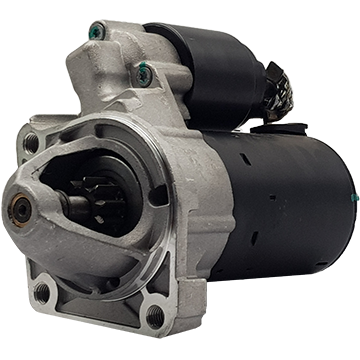Common Issues with the Ford Fiesta Engine and How to Fix Them
Common Issues with the Ford Fiesta Engine and How to Fix Them
Blog Article
Unlocking the Power of Engines: A Comprehensive Guide to Performance and Efficiency
Recognizing the detailed technicians of engines is critical for both performance fanatics and daily drivers. The responses might redefine our method to engine efficiency and effectiveness in ways that are both enlightening and important.
Recognizing Engine Basics
What comprises the fundamental mechanics of an engine? At its core, an engine is a maker made to transform fuel right into mechanical power via a collection of controlled surges or burning procedures.
The crankshaft after that transforms this linear motion right into rotational power, which eventually powers the automobile. The camshaft manages the opening and closing of the shutoffs, controling the consumption of air and gas and the expulsion of exhaust gases. Additionally, the engine depends on a meticulously adjusted fuel-air combination, ignition system, and cooling down system to ensure optimal performance and effectiveness.
Recognizing engine essentials likewise involves acknowledging the significance of engine cycles, such as the four-stroke cycle, which consists of intake, compression, exhaust, and power strokes. Each phase is vital in making sure the engine works smoothly and effectively. Proficiency of these essential technicians prepares for exploring more complex engine characteristics and efficiency metrics, vital for enhancing both power result and performance.
Key Efficiency Metrics
Secret efficiency metrics are vital for examining an engine's performance and power outcome, providing beneficial insights for both makers and customers. These metrics work as benchmarks for engine performance, enabling informed decisions in manufacturing, design, and buying.
Among the key metrics is horse power, which measures the engine's capacity to perform work over time. Torque, determined in pound-feet, is another critical statistics that suggests the engine's rotational force, directly impacting acceleration and towing capability. Gas performance, usually determined in miles per gallon (MPG) or liters per 100 kilometers (L/100km), assesses exactly how efficiently the engine converts fuel right into motion, impacting operational costs and ecological factors to consider.
In addition, thermal efficiency steps exactly how well an engine converts fuel power into beneficial work, exposing understandings right into power losses mostly through warm. Emission degrees, consisting of carbon dioxide and NOx, are additionally vital, mirroring the engine's environmental effect and conformity with regulatory criteria.

Tuning Methods for Effectiveness
Tuning techniques play a significant duty in enhancing engine efficiency by enhancing efficiency metrics recognized in earlier discussions (ford fiesta engine). Numerous techniques exist to make improvements an engine, each contributing to boosted gas economic situation and lowered emissions
One reliable technique is changing the air-fuel ratio, making sure the engine operates within the optimum burning regime. A leaner blend can boost fuel efficiency, but it has to be stabilized to stop misfires or engine knock. Additionally, reprogramming the engine management system can alter parameters such as ignition timing, which further boosts efficiency while maintaining power result.
One more vital approach includes modifying the consumption and exhaust systems. Upgrading to high-performance air filters and exhaust headers can lower back stress, promoting much better air movement. This enables the engine to take a breath even more openly, resulting in enhanced combustion effectiveness.
Moreover, the application of sites advanced tuning tools, like dyno screening, gives precise information that enables targeted modifications. Frequently keeping track of these performance metrics ensures that adjusting efforts generate the wanted performance end results. Jointly, these strategies not just boost engine performance yet also add to lasting sustainability in engine operations.
Maintenance for Optimal Performance
Normal engine maintenance is necessary for accomplishing ideal performance and long life. A well-maintained engine not only operates efficiently yet additionally lessens the risk of costly repair work and breakdowns. Key components calling for normal interest include oil, filters, belts, and stimulate plugs.
Altering the engine oil at recommended periods is essential, as oil lubes moving parts and stops getting too hot. Changing oil and air filters guarantees that impurities do not hinder engine function. Neglecting these parts can cause minimized effectiveness and potential engine damages.
Furthermore, checking and replacing used belts and hoses is essential to protect against sudden failures. Timing belts, particularly, should be replaced according to the producer's routine to avoid devastating engine damages.
Ignition system ought to also be examined and replaced as necessary, because they play an important role in ignition and gas effectiveness.
Future Fads in Engine Modern Technology
Embracing developments in innovation, the future of engine style is poised to reinvent efficiency and performance throughout various applications. Hybrid and fully electric powertrains are coming check my site to be significantly mainstream, providing minimized discharges and enhanced gas effectiveness.
Additionally, innovations in materials science are causing lighter, more powerful components that boost engine performance while minimizing power consumption. Advanced manufacturing methods, such as 3D printing, permit the creation of complicated geometries that boost air flow and thermal management, hence enhancing burning procedures.
In addition, the combination of expert system and artificial intelligence is readied to transform engine diagnostics and performance adjusting. These innovations can analyze substantial amounts of data in genuine time, making it possible for predictive maintenance and customized efficiency improvements.
Verdict
In final thought, opening the power of engines calls for an extensive understanding of their technicians and efficiency metrics. Applying efficient tuning strategies and sticking to regular maintenance methods substantially enhance engine capabilities.
In addition, the engine relies their website on a carefully adjusted fuel-air combination, ignition system, and cooling system to guarantee ideal performance and performance.
Comprehending engine essentials also includes acknowledging the importance of engine cycles, such as the four-stroke cycle, which includes consumption, compression, exhaust, and power strokes. Mastery of these basic auto mechanics lays the groundwork for exploring more complicated engine dynamics and efficiency metrics, necessary for maximizing both power output and efficiency.

Welcoming improvements in innovation, the future of engine style is poised to revolutionize efficiency and effectiveness across numerous applications.
Report this page